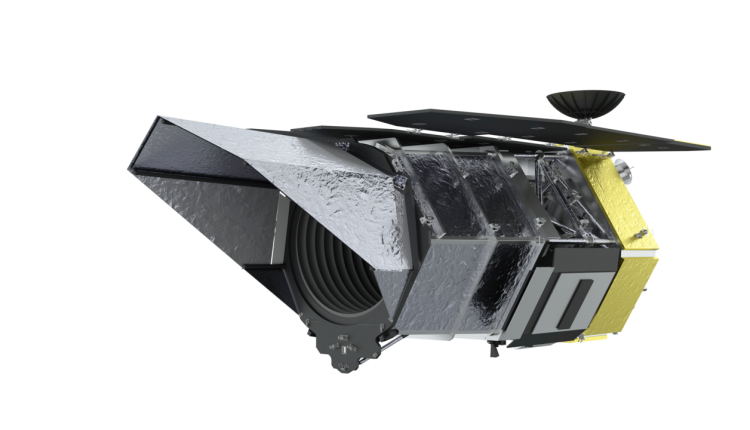When the Nancy Grace Roman space telescope starts in NASA in October 2026, it will not only look into the distance to study dark energy and exoplanets. This mighty observatory will also serve as the latest guards on earth and help scientists to pursue and understand potentially dangerous asteroids and comets that could threaten our planet.
The Roman space telescope will position itself on the Earth-Sun L2 LAGRANGE POINT, a gravitatively stable location about 1.5 million kilometers from the earth in the opposite direction of the sun. From this point of view, the telescope will use its sensitive almost infrared vision to study near earth objects (NEOS), the asteroids and comets whose orbits bring them close to our planet.
The spaceship bus of the Roman space telescope in the Goddard Space Flight Center, September 2024 (loan: NASA)
What makes Roman particularly valuable for the planetary defense is its ability to measure the physical properties of these space rocks with unprecedented precision. While other telescopes can recognize asteroids, Roman can determine its size, shape, composition and exact orbital paths. This detailed information is crucial to understand which objects represent real threats and which are harmless.
Roman will not work alone in this astronomical neighborhood clock. Two other important asteroid hunting missions will join together to create a comprehensive planetary defense network that extends over the electromagnetic spectrum. The Vera C. Rubin Observatory, which is already operated in Chile, uses visible light to scan the sky, and it is expected that over 100,000 new ones are discovered near earth objects. In the meantime, the upcoming Neo Surveyor Space Mission will observe in the middle infrared area, in which asteroids shine with heat and possibly determine between 200,000 and 300,000 NEOs, including monitoring of only 20 meters.
Vera C. Rubin Observatory and the Milky Way Galaxy (Credit: Rubin Observatory/NSF/Aura/B. Quint)
Each telescope gives the asteroid hunting team unique strengths. Rubin is characterized to find new objects about wide swaths of heaven. The neo -meter can recognize the thermal signatures of small asteroids that are possibly too weak to see them in visible light. With its high resolution near infrared skills, Roman will provide the detailed follow -up observations that are necessary to really understand these objects.
One of the most important contributions from Roman will be to dramatically improve our knowledge of asteroid railways. Current measurements of neo -trajectories are improved by two to three orders of magnitude, which means that our predictions about where these objects will be in the future will become more precise. This precision is important to determine whether an asteroid discovered today could be a threat in decades.
Roman will also work closely with the neo -meter to carry out the exact size and brightness measurements of asteroids. By observing the same objects in different infrared wave lengths, the two telescopes can both determine how big an asteroid is and how reflective its surface is, key factors when evaluating potential effects.
Neo Surveyor’s Mirror (Credit: NASA/JPL-CALTECH)
The most fascinating will be able to identify the compositions and spectral types of self -earth -earth objects. This information shows what asteroids are made of. Regardless of whether they are rocky, metallic or icy, something that influences both their potential effects and their value as future resources for research into space.
In order to achieve these goals, NASA has to develop new data processing techniques that have been developed especially for information from images of fast moving objects. In contrast to distant galaxies that appear stationary, asteroids strip over Roman’s field of vision and require special software to track them and measure their properties precisely.
The timing of these three missions creates an unprecedented opportunity to defend planet. Together they offer the most comprehensive census of potentially dangerous asteroids that have ever been put together. This knowledge is not only for the protection of the earth against effects, but also for the understanding of the population of small body, which is left out of the formation of our solar system.
Source: The Roman space telescope as a planetary defense assistance


Comments are closed.